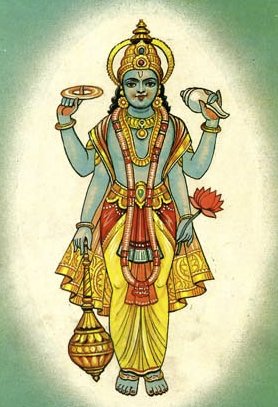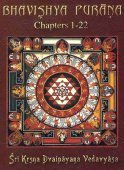Brahmacari, Brahmacārī, Brahmacāri, Brahma-cari: 13 definitions
Introduction:
Brahmacari means something in Hinduism, Sanskrit, Buddhism, Pali, Marathi, Hindi, biology. If you want to know the exact meaning, history, etymology or English translation of this term then check out the descriptions on this page. Add your comment or reference to a book if you want to contribute to this summary article.
Alternative spellings of this word include Brahmachari.
In Hinduism
Shilpashastra (iconography)
Source: Wisdom Library: Elements of Hindu IconograpyBrahmacāri (additional aspect of Subrahmaṇya, according to the Śrītatvanidhi) Subrahmaṇya in this aspect should have two eyes, two arms and be standing upon a padma. He must have a tuft of hair on his head, a yajñopavīta, mauñji (grass girdle) and kaupīna. The right leg should be firmly placed upon the padma and the left one slightly bent and rested upon it. In the right hand there should be a daṇḍa and in the left a vajra. His complexion should be red.

Shilpashastra (शिल्पशास्त्र, śilpaśāstra) represents the ancient Indian science (shastra) of creative arts (shilpa) such as sculpture, iconography and painting. Closely related to Vastushastra (architecture), they often share the same literature.
Vaishnavism (Vaishava dharma)
Source: ISKCON Press: GlossaryBrahmacārī (ब्रह्मचारी).—A celibate student under the care of a spiritual master. One in the first order of spiritual life; In the Vedic social order, the student class who strictly accept the vow of celibacy, in the case of brāhmaṇas, up to the age of 25, at which time they may marry or continue the life of celibacy; a celibate student of a spiritual master; A member of the first spiritual devision of life, according to the Vedic social system of four āśramas. See Gṛhasta, Sannyāsī, Vānaprastha.
Source: Pure Bhakti: Bhajana-rahasya - 2nd EditionBrahmacārī (ब्रह्मचारी) refers to:—A member of the first āśrama (stage of life) in the varṇāśrama system; a celibate, unmarried student. (cf. Glossary page from Bhajana-Rahasya).

Vaishnava (वैष्णव, vaiṣṇava) or vaishnavism (vaiṣṇavism) represents a tradition of Hinduism worshipping Vishnu as the supreme Lord. Similar to the Shaktism and Shaivism traditions, Vaishnavism also developed as an individual movement, famous for its exposition of the dashavatara (‘ten avatars of Vishnu’).
Purana and Itihasa (epic history)
Source: archive.org: Puranic Encyclopedia1) Brahmacāri (ब्रह्मचारि).—See Brahmacarya.
2) Brahmacāri (ब्रह्मचारि).—A devagandharva (a class of Gods) born to Kaśyapaprajāpati of his wife Pṛthā. He took part in the Birth festival of Arjuna. (Mahābhārata Ādi Parva, Chapters 65 and 122).
Source: Cologne Digital Sanskrit Dictionaries: The Purana IndexBrahmacāri (ब्रह्मचारि).—A son of Krodhā and a Devagandharva.*
- * Brahmāṇḍa-purāṇa III. 6. 39; Vāyu-purāṇa 68. 38.
Brahmacārī (ब्रह्मचारी) is a name mentioned in the Mahābhārata (cf. I.59.45, I.65) and represents one of the many proper names used for people and places. Note: The Mahābhārata (mentioning Brahma-cārī) is a Sanskrit epic poem consisting of 100,000 ślokas (metrical verses) and is over 2000 years old.

The Purana (पुराण, purāṇas) refers to Sanskrit literature preserving ancient India’s vast cultural history, including historical legends, religious ceremonies, various arts and sciences. The eighteen mahapuranas total over 400,000 shlokas (metrical couplets) and date to at least several centuries BCE.
Shaivism (Shaiva philosophy)
Source: HAL: The function of the Vṛṣasārasaṃgraha in the Śivadharma corpusBrahmacārī (ब्रह्मचारी) refers to one of the Six Āśramas referred to by Kauṇḍinya in his comments on Pāśupatasūtra 3.1.—The system of the four Brahmanical Āśramas also survived practically intact during the time of the Tantric and non-Tantric manifestations of Śaivism and Vaiṣṇavism The editor of the Trivandrum edition of the Pāśupatasūtra gives a list in explanation of the phrase ‘Six Āśramas’ [e.g., Brahmacārī]. This interpretation is probably based on Kauṇḍinya ad Pāśupatasūtra 1.6 and 4.18 (“the paths of the householder, the chaste student, the forest-dweller, the mendicant, and the heretic are wrong paths”).

Shaiva (शैव, śaiva) or Shaivism (śaivism) represents a tradition of Hinduism worshiping Shiva as the supreme being. Closely related to Shaktism, Shaiva literature includes a range of scriptures, including Tantras, while the root of this tradition may be traced back to the ancient Vedas.
Biology (plants and animals)
Source: Google Books: CRC World Dictionary (Regional names)Brahmacari in India is the name of a plant defined with Morus indica in various botanical sources. This page contains potential references in Ayurveda, modern medicine, and other folk traditions or local practices.
Example references for further research on medicinal uses or toxicity (see latin names for full list):
· Species Plantarum (1753)
· Annuaire Conserv. Jard. Bot. Genève (1908)
· Flora Indica, or ‘Descriptions of Indian Plants’ (1832)
· Journal of Cytology and Genetics (1989)
· Taxon (1980)
· Glimpses of Cytogenetics in India (1989)
If you are looking for specific details regarding Brahmacari, for example health benefits, extract dosage, side effects, chemical composition, diet and recipes, pregnancy safety, have a look at these references.

This sections includes definitions from the five kingdoms of living things: Animals, Plants, Fungi, Protists and Monera. It will include both the official binomial nomenclature (scientific names usually in Latin) as well as regional spellings and variants.
Languages of India and abroad
Pali-English dictionary
Source: BuddhaSasana: Concise Pali-English Dictionarybrahmacārī : leading a chaste life.

Pali is the language of the Tipiṭaka, which is the sacred canon of Theravāda Buddhism and contains much of the Buddha’s speech. Closeley related to Sanskrit, both languages are used interchangeably between religions.
Marathi-English dictionary
Source: DDSA: The Molesworth Marathi and English Dictionarybrahmacārī (ब्रह्मचारी).—m (S) A Brahman from his investiture with the sacrificial thread until marriage; during which period he is enjoined to observe the strictest chastity. 2 A Brahman that religiously abstains from all sexual commerce with women; either for a time or through life. sōḷā sahastra gōpī bhōgūna bra0 (Allusively to the numberless fornications of kṛṣṇa.) Used ironically of one who revels in sensuality or impurity and yet affects chastity and sanctity.
Source: DDSA: The Aryabhusan school dictionary, Marathi-Englishbrahmacārī (ब्रह्मचारी).—m A brāmhaṇa from his muñja until marriage.
Marathi is an Indo-European language having over 70 million native speakers people in (predominantly) Maharashtra India. Marathi, like many other Indo-Aryan languages, evolved from early forms of Prakrit, which itself is a subset of Sanskrit, one of the most ancient languages of the world.
Hindi dictionary
Source: DDSA: A practical Hindi-English dictionaryBrahmacārī (ब्रह्मचारी) [Also spelled brahmchari]:—(nm) a celibate; one who is in the [brahmacarya āśrama] (see).
...
Kannada-English dictionary
Source: Alar: Kannada-English corpusBrahmacāri (ಬ್ರಹ್ಮಚಾರಿ):—
1) [noun] (masc.) a student before entering into married life.
2) [noun] an unmarried man or a man under a vow to remain unmarried.
3) [noun] (masc.) one who abstains from sexual intercourse.
4) [noun] Śiva.
5) [noun] Skanda, son of Śiva.
Kannada is a Dravidian language (as opposed to the Indo-European language family) mainly spoken in the southwestern region of India.
See also (Relevant definitions)
Partial matches: Brahma, Carin.
Starts with: Brahmacarika, Brahmacarin, Brahmacarini, Brahmacarivasa, Brahmacarivasin, Brahmacariya, Brahmacariya Sutta, Brahmacariyaka, Brahmacariyantaraya, Brahmacariyanuggaha, Brahmacariyavant, Brahmacariyavasa, Brahmacariyupaddava.
Ends with: Ajivabrahmacari, Balabrahmacari, Ghodabrahmacari, Naishthikabrahmacari, Sabrahmacari.
Full-text (+36): Naishthika, Matha, Ashrama, Upavasin, Brahmacarini, Varṇi, Ashramantara, Aupakurvanaka, Brahmchari, Shvabhojana, Abhinirmukta, Naishthik, Akamatas, Sampada, Abhunjana, Prajapatya, Sadhu, Labdhanujna, Atharvashiras, Dridhavrata.
Relevant text
Search found 69 books and stories containing Brahmacari, Brahmacārī, Brahmacāri, Brahma-cari, Brahma-cārī; (plurals include: Brahmacaris, Brahmacārīs, Brahmacāris, caris, cārīs). You can also click to the full overview containing English textual excerpts. Below are direct links for the most relevant articles:
Chaitanya Bhagavata (by Bhumipati Dāsa)
Verse 1.2.162 < [Chapter 2 - The Lord’s Appearance]
Verse 2.5.67 < [Chapter 5 - Lord Nityānanda’s Vyāsa-pūjā Ceremony and His Darśana of the Lord’s Six-armed Form]
Verse 2.23.58 < [Chapter 23 - Wandering about Navadvīpa On the Day the Lord Delivered the Kazi]
Srila Gurudeva (The Supreme Treasure) (by Swami Bhaktivedanta Madhava Maharaja)
ISKCON Leaders in Mathurā < [Chapter 2.13 - Śrīla Gurudeva Testifies to Save ISKCON]
Eager to Hear < [Chapter 2.12 - Early ISKCON Conversations with Śrīla Gurudeva]
Serving Prasāda < [Chapter 2.14 - Lessons on Service and Absorption]
Rig Veda (translation and commentary) (by H. H. Wilson)
Rig Veda 10.109.5 < [Sukta 109]
Garga Samhita (English) (by Danavir Goswami)
Verse 1.4.57 < [Chapter 4 - Description of Questions About the Lord’s Appearance]
Verses 4.18.11-12 < [Chapter 18 - The Names and Worship of Srī Yamunā]
Verse 4.1.22 < [Chapter 1 - The Story of the Personified Vedas]
Brihad Bhagavatamrita (commentary) (by Śrī Śrīmad Bhaktivedānta Nārāyana Gosvāmī Mahārāja)
Verse 2.2.109 < [Chapter 2 - Jñāna (knowledge)]
Verse 2.3.92-93 < [Chapter 3 - Bhajana (loving service)]
Verse 1.4.110 < [Chapter 4 - Bhakta (the devotee)]
History of Indian Medicine (and Ayurveda) (by Shree Gulabkunverba Ayurvedic Society)
Chapter 9 - The Students Life and Discipline < [Part 2-3 - Medical Institutions in Ancient India]
Chapter 6 - The Oath of Initiation < [Part 2-3 - Medical Institutions in Ancient India]
Chapter 13 - Completion of Study < [Part 2-3 - Medical Institutions in Ancient India]
Related products
